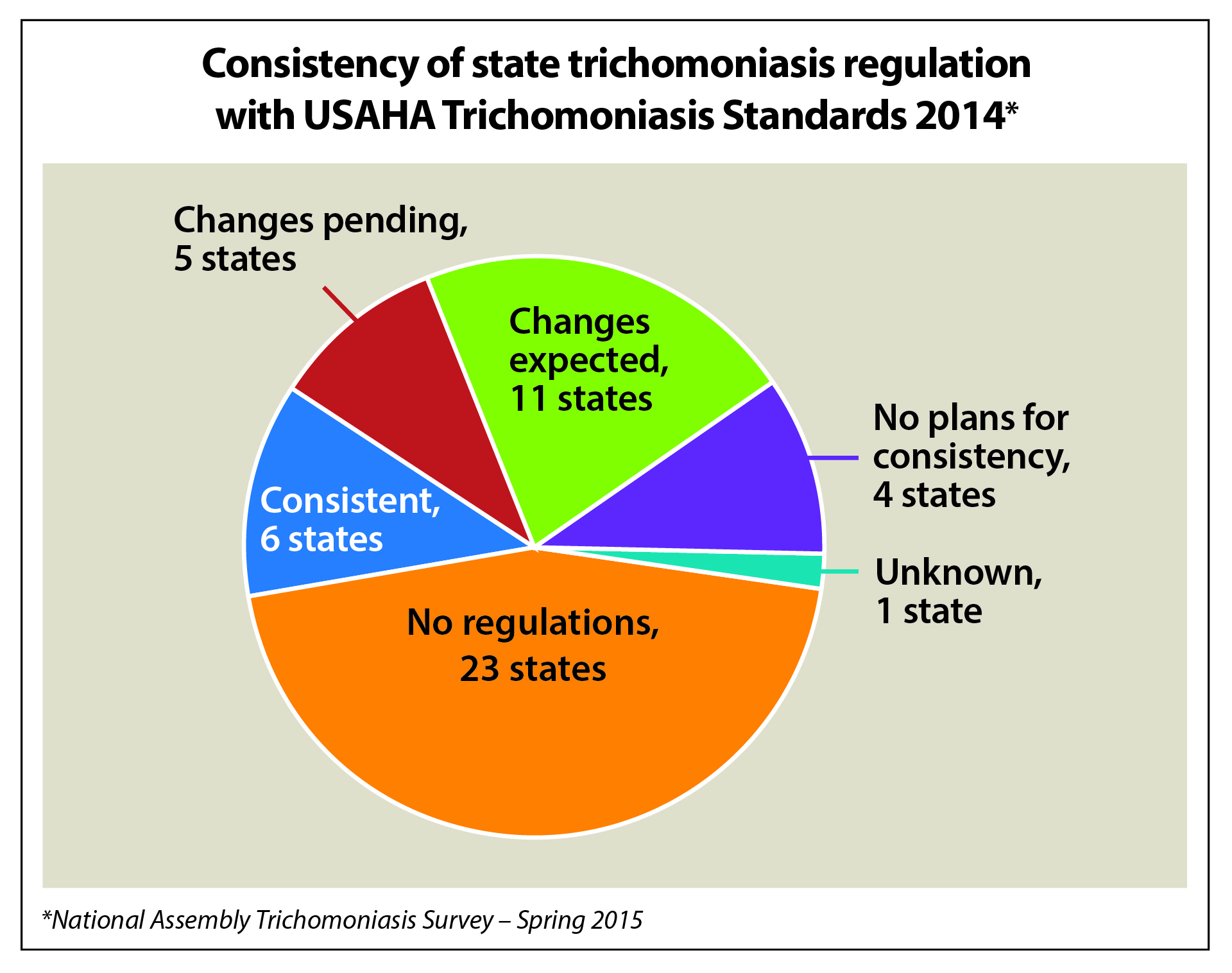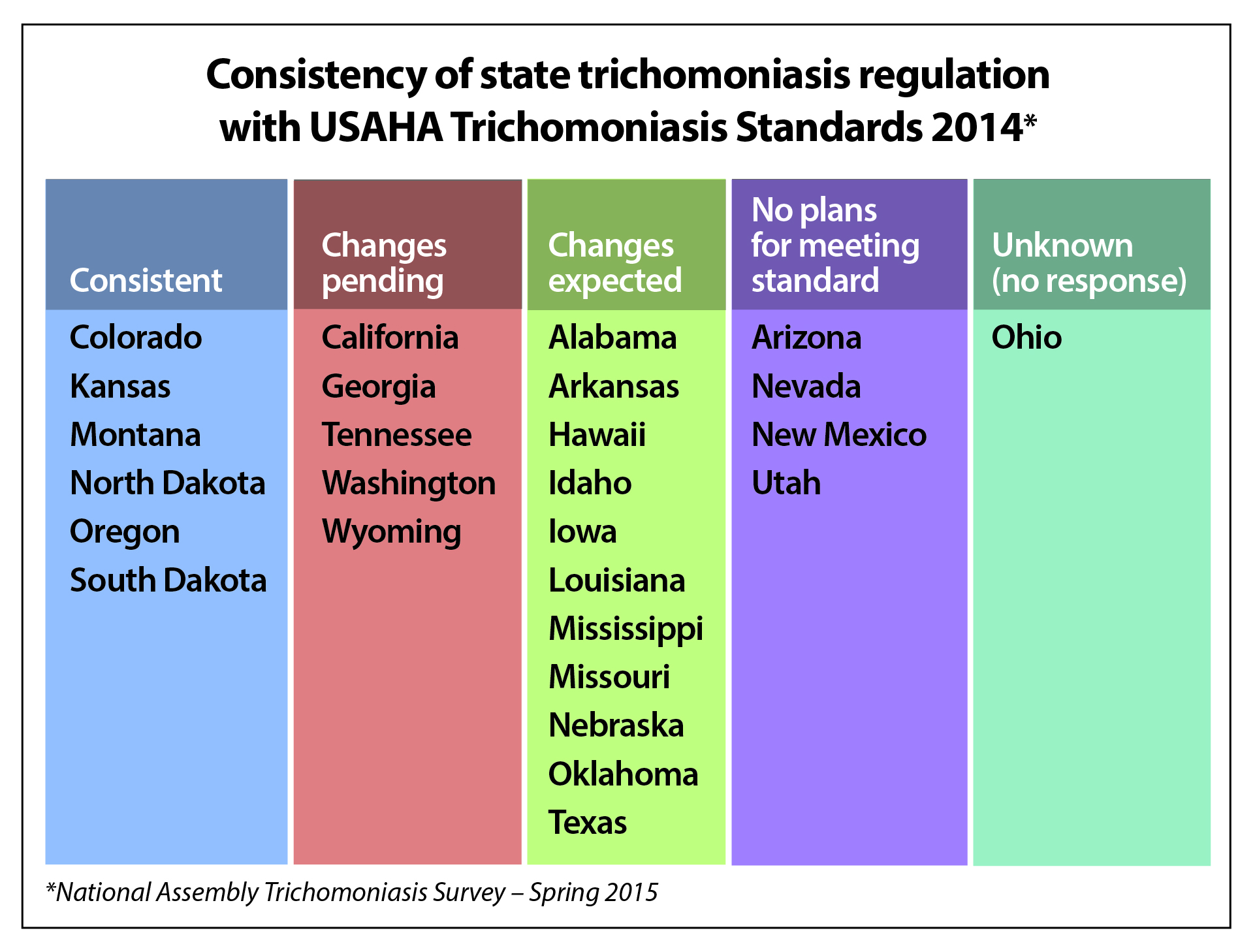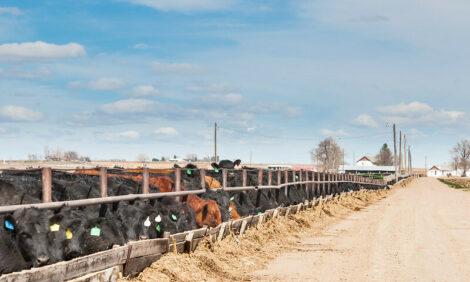



Survey: Move to Harmonize Interstate Regulations, Testing for Trichomoniasis
US - A recent survey shows more states are moving toward harmonizing interstate regulations and approved testing for trichomoniasis.In late 2014, the U.S. Animal Health Association (USAHA) endorsed three standard components of interstate regulations and testing for trichomoniasis (trich):
- Virgin bulls up to 18 months of age will be exempt from trich testing requirements.
- A negative trich test is valid for 60 days after collection if the bull is held separate from females.
- A single, negative DNA amplification-based test of samples collected by a U.S. Department of Agriculture Category II Accredited Veterinarian certified by the state of origin to collect trich samples for interstate movement.
In the first quarter of 2015, Marty Zaluski, D.V.M., state veterinarian for the Montana Department of Livestock, conducted a survey to determine whether states are moving toward meeting trich standards endorsed by USAHA. Thermo Fisher Scientific, a company with deep expertise in animal diagnostics, held a question-and-answer session with Zaluski to discuss results of the recent survey and his views on the importance of standardizing trich regulations and testing across the country.
 Q: What led you to conduct the trich regulations harmonization survey?
Q: What led you to conduct the trich regulations harmonization survey?
A: Three reasons contributed to the genesis of the survey.
First, I received feedback from seedstock cattle producers stating the highly variable (and sometimes overly burdensome) trich regulations were creating unnecessary costs at the time of bull sales.
Second, conversations with other state animal health officials at meetings of the Western States Livestock Health Association (WSLHA) highlighted the need to work with a small focused group of neighboring states to achieve greater consistency. That approach soon spread to finding common ground between all states with trich regulations.
Third, animal health offices have been monitoring interstate trich regulations for some time, however, the use of a simple online survey tool made this a much simpler process to collect as well as analyze results.
An initial survey in the fall of 2014 focused on whether animal health officials were willing to agree “in principle” to a set of standards developed through the smaller interstate working groups. Animal health officials agreed to work in their states with industry groups and initiate rulemaking to meet the standards. The 2015 survey assessed actual progress to meet those standards.
Q: Why do you think harmonizing trich regulations and testing across states is important for producers and veterinarians?
A: A 12-month-old virgin bull may be required to be tested in one state but not in another, therefore, import requirements are unknown until a bull is actually sold. Subsequent delays to complete testing create delays and unnecessary costs throughout the bull-marketing channel. When rules are standardized, they are predictable, so producers and veterinarians can be better prepared before the sale and ship bulls as soon as the ink is dry on the buyer’s check.
 Q: What are important takeaways from the results of this survey?
Q: What are important takeaways from the results of this survey?
A: We are making tremendous progress. As of the spring 2015 survey, six states are meeting the standard established by the 2014 USAHA resolution. Five states report having changes pending and expect to meet the standard by 2016. Another 11 states are looking to initiate the changes to meet the standards. Only four states (Arizona, Nevada, New Mexico and Utah) report they do not intend to make changes. While this may be frustrating for producers shipping to those destinations, the states not meeting the standard will be the minority.
Q: Could you explain the role diagnostics, specifically PCR, plays in the national movement toward harmonizing trich regulations?
A: The survey did not address the high degree of variability in diagnostic laboratory protocols which are most often established internally at a given diagnostic laboratory or through associations such as the American Association of Veterinary Laboratory Diagnosticians (a sister organization of the USAHA).
However, it is obvious laboratories should validate sample media, shipping conditions and analysis. Likewise, when validated, approved and USDA-licensed PCR products, such as the VetMAX™-Gold Trich Detection Kit from Thermo Fisher, are available but not being used, we should be asking for information supporting those decisions.
Q: What are some of the key barriers preventing or slowing states from harmonizing trich regulations?
A: Trich regulations arose based on grassroots producer input over several years. Each state formulated rules based on their unique experiences and these still influence industry positions. Additionally, rulemaking can be time-consuming and highly cumbersome. Therefore, there can be considerable delays before rules “catch up” to a desired standard.
Another key barrier to change is that interstate regulations primarily affect “outside” states, therefore, the incentive to change import rules for greater uniformity is not as salient.
Q: What will you be doing with these results?
A: We have shared these results with all state animal health officials and national industry groups such as the National Cattlemen’s Beef Association and the USAHA. We hope the results will be communicated to state producer groups so the same grassroots pressure that was used to enact regulations can be used to bring greater uniformity.
We will be repeating the survey annually and discussing the harmonization effort at WSLHA and at the 2015 USAHA Annual Meeting. I have reason to be optimistic about continued progress.
TheCattleSite News Desk




